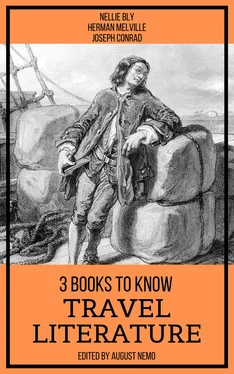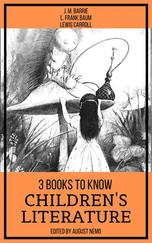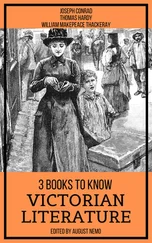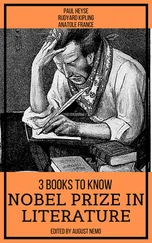There was little time for regret. They were advancing towards us, and in another second I had forgotten my untidiness in the cordial welcome they gave me. Jules Verne’s bright eyes beamed on me with interest and kindliness, and Mme. Verne greeted me with the cordiality of a cherished friend. There were no stiff formalities to freeze the kindness in all our hearts, but a cordiality expressed with such charming grace that before I had been many minutes in their company, they had won my everlasting respect and devotion.
M. Verne led the way to the carriages which waited our coming. Mme. Verne walked closely by my side, glancing occasionally at me with a smile, which said in the language of the eye, the common language of the whole animal world, alike plain to man and beast:
“I am glad to greet you, and I regret we cannot speak together.” M. Verne gracefully helped Mme. Verne and myself into a coupé, while he entered a carriage with the two other gentlemen. I felt very awkward at being left alone with Mme. Verne, as I was altogether unable to speak to her.
Her knowledge of the English language consisted of “No” and my French vocabulary consisted of “Oui,” so our conversation was limited to a few apologetic and friendly smiles interluded with an occasional pressure of the hand. Indeed, Mme. Verne is a most charming woman, and even in this awkward position she made everything go most gracefully.
It was early evening. As we drove through the streets of Amiens I got a flying glimpse of bright shops, a pretty park, and numerous nurse maids pushing baby carriages about.
When our carriage stopped I got out and gave my hand to Mme. Verne to help her alight. We stood on a wide, smooth pavement, before a high stone wall, over the top of which I could see the peaked outlines of the house.
M. Verne was not long behind us. He hurried up to where we were standing and opened a door in the wall. Stepping in I found myself in a small, smoothly paved court-yard, the wall making two sides and the house forming the square.
A large, black shaggy dog came bounding forward to greet me. He jumped up against me, his soft eyes overflowing with affection, and though I love dogs and especially appreciated this one’s loving welcome, still I feared that his lavish display of it would undermine my dignity by bringing me to my knees at the very threshold of the home of the famous Frenchman.
M. Verne evidently understood my plight, for he spoke shortly to the dog, who, with a pathetic droop of his tail, went off to think it out alone.
We went up a flight of marble steps across the tiled floor of a beautiful little conservatory that was not packed with flowers but was filled with a display just generous enough to allow one to see and appreciate the beauty of the different plants. Mme. Verne led the way into a large sitting-room that was dusky with the early shade of a wintry evening. With her own hands she touched a match to the pile of dry wood that lay in the wide open fireplace.
Meanwhile M. Verne urged us to remove our outer wrappings. Before this was done a bright fire was crackling in the grate, throwing a soft, warm light over the dark room. Mme. Verne led me to a chair close by the mantel, and when I was seated she took the chair opposite. Cheered by the warmth I looked quietly on the scene before me.
The room was large and the hangings and paintings and soft velvet rug, which left visible but a border of polished hard wood, were richly dark. On the mantel, which towered above Mme. Verne’s head, were some fine pieces of statuary in bronze and, as the fire gave frequent bright flashes as the flames greedily caught fresh wood, I could see another bronze piece on a pedestal in a corner. All the chairs artistically upholstered in brocaded silks, were luxuriously easy. Beginning at either side of the mantel they were placed in a semi-circle around the fire, which was only broken by a little table that held several tall silver candlesticks.
A fine white Angora cat came rubbing up against my knee, then seeing its charming mistress on the opposite side, went to her and boldly crawled up in her lap as if assured of a cordial welcome.
Next to me in this semi-circle sat Mr. Sherard. M. Jules Verne was next to Mr. Sherard. He sat forward on the edge of his chair, his snow-white hair rather long and heavy, was standing up in artistic disorder; his full beard, rivaling his hair in snowiness, hid the lower part of his face and the brilliancy of his bright eyes that were overshadowed with heavy white brows, and the rapidity of his speech and the quick movements of his firm white hands all bespoke energy-life-with enthusiasm.
The London correspondent sat next to Jules Verne. With a smile on her soft rosy lips, Mme. Verne sat nursing the cat which she stroked methodically with a dainty, white hand, while her luminous black eyes moved alternately between her husband and myself.
She was the most charming figure in that group around the wood fire. Imagine a youthful face with a spotless complexion, crowned with the whitest hair, dressed in smooth, soft folds on the top of a dainty head that is most beautifully poised on a pair of plump shoulders. Add to this face pretty red lips, that opened disclose a row of lovely teeth, and large, bewitching black eyes, and you have but a faint picture of the beauty of Mme. Verne.
This day when she met me she wore a sealskin jacket and carried a muff, and on her white head was a small black velvet bonnet. On taking her wraps off in the house I saw she wore a watered-silk skirt, laid in side plaits in the front with a full straight black drapery, that was very becoming to her short, plump figure. The bodice was of black silk velvet.
Mme. Verne is, I should judge, not more than five feet two in height; M. Verne about five feet five. M. Verne spoke in a short, rapid way, and Mr. Sherard in an attractive, lazy voice translated what was said for my benefit.
“Has M. Verne ever been to America?” I asked.
“Yes, once;” the answer came translated to me. “For a few days only, during which time I saw Niagara. I have always longed to return, but the state of my health prevents my taking any long journeys. I try to keep a knowledge of everything that is going on in America and greatly appreciate the hundreds of letters I receive yearly from Americans who read my books. There is one man in California who has been writing to me for years. He writes all the news about his family and home and country as if I were a friend and yet we have never met. He has urged me to come to America as his guest. I know of nothing that I long to do more than to see your land from New York to San Francisco.”
“How did you get the idea for your novel, ‘Around the World in Eighty Days?’” I asked.
“I got it from a newspaper,” was his reply. “I took up a copy of Le Siécle one morning, and found in it a discussion and some calculations showing that the journey around the world might be done in eighty days. The idea pleased me, and while thinking it over it struck me that in their calculations they had not called into account the difference in the meridians and I thought what a denouement such a thing would make in a novel, so I went to work to write one. Had it not been for the denouement I don’t think that I should ever have written the book.”
“I used to keep a yacht, and then I traveled all over the world studying localities; then I wrote from actual observation. Now, since my health confines me to my home, I am forced to read up descriptions and geographies.”
M. Verne asked me what my line of travel was to be, and I was very happy to speak one thing that he could understand, so I told him.
“My line of travel is from New York to London, then Calais, Brindisi, Port Said, Ismailia, Suez, Aden, Colombo, Penang, Singapore, Hong Kong, Yokohama, San Francisco, New York.”
Читать дальше












